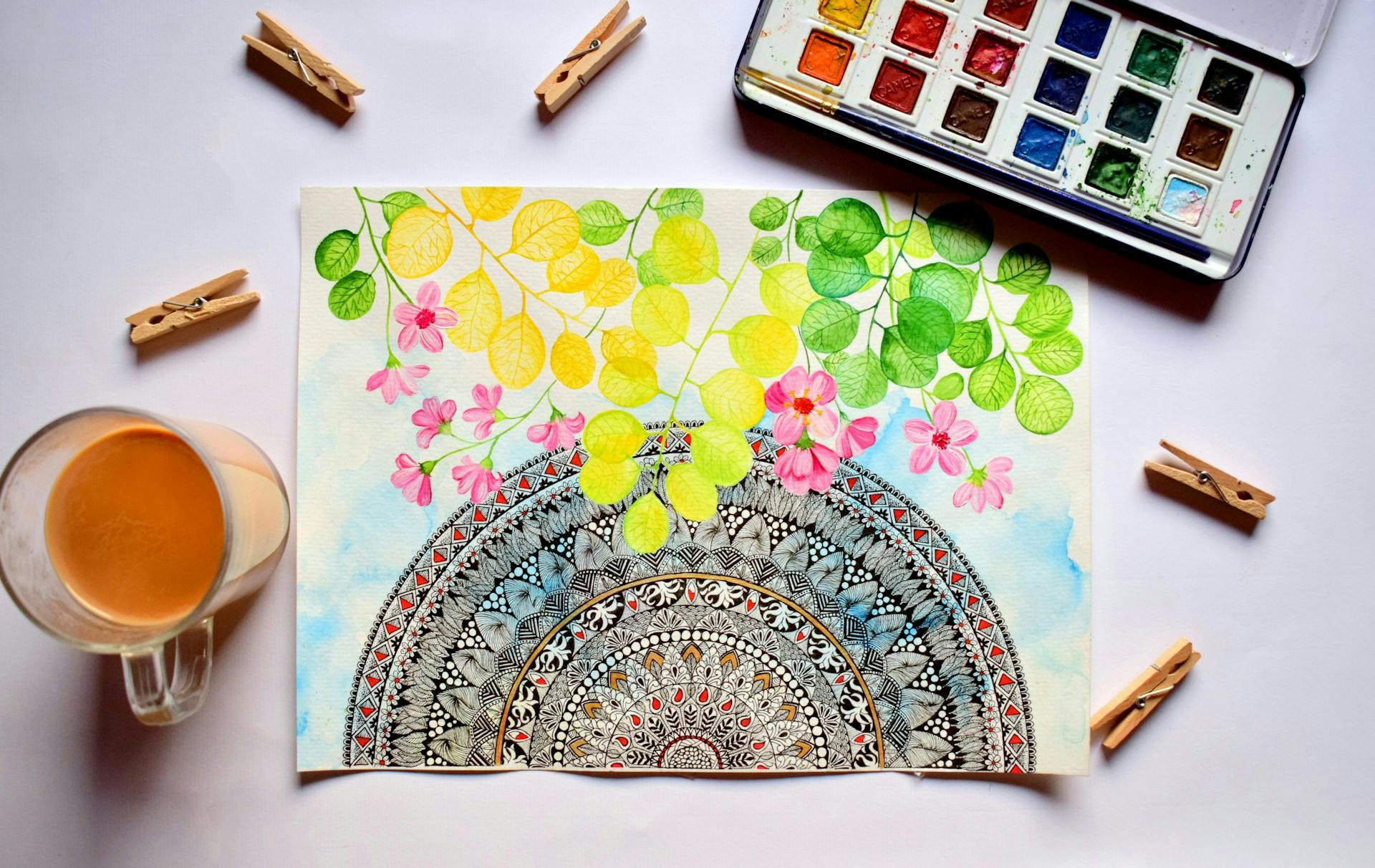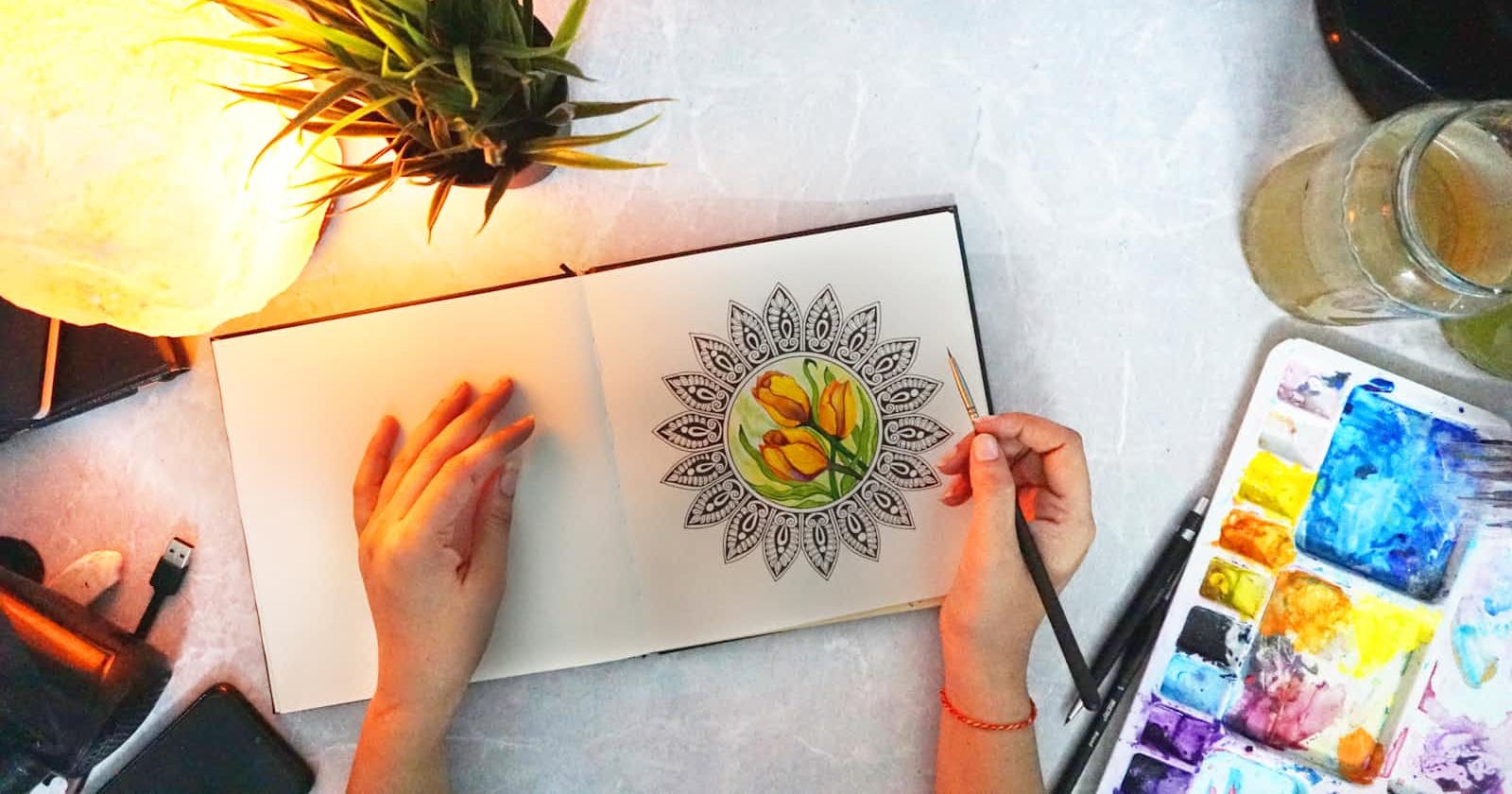With much of ample efforts, Tanvi chose to express her battle with depression with the world.
While the names in this series would be fictional to protect privacy. The narrative would be in her own words & inspired by our discussions.
Notes in her own words:
I tried meditation a bit, but I feel like nothing has a lasting effect on me. It's like having a fever and taking medicine to get better temporarily. It resembles how cancer might go into remission after chemotherapy but often returns after a few years or months, in many cases.
Sometimes reading a novel helps, but it's essential to discover what works best for you personally. For instance, the more depressed I feel, the more I turn to creativity as an outlet. I chose Mandala art from. It’s an artistic representations of Buddhist beliefs as well as a perfect universe.
They're used to focus the mind in meditation, teach people in religious training, and guide a meditating person to spiritual healing and enlightenment.
Someone might wonder, why I chose mandala art over any other forms like painting, sketching or portrait making which just needs a bit more practice. At that time, I felt I needed an immediate solution to prevent things from worsening, planning to reassess options later though that hasn't happened yet due to some reasons, but I'm trying.

I wanted to engage in an activity that would not only distract me from my relentless thoughts but also produce tangible, productive results. After all, spending days and nights merely watching videos and reading quotes wasn't appealing anymore.
I recently learned about the concept of manifestation, but it didn't work the way I hoped. I did everything that was supposed to help me, but perhaps there were some faults on my part. However, it did offer me insights on how to avoid negative thoughts. As a result, I discovered mandalas as a temporary solution.

My initial belief was that manifestation transcends karma and I hadn’t really manifested anything either in my subconscious or conscious mind. Wasn’t the idea of creating mandalas for this very purpose useful, though? It wasn’t intended to cure my depression, but it indirectly provided a temporary solution, which made me feel worthwhile at that time.
I noticed they often use specific patterns for hypnosis. So, I was looking for patterns that I could repeatedly work on to keep myself busy and prevent other thoughts from intruding while I engage in painting, sketching or creating portraits.
These shapes and patterns allow me to focus and finish the artwork over time, but with mandalas, you can spend as much time and incorporate as many patterns as you like.

I found this activity not only distracting but also productive. I’m not claiming to have become a great artist, but it significantly eased my depression and anxiety.
Now, I have plenty of ideas for incorporating mandalas, which I find quite intriguing, especially when mixing them with other art forms. For me, mandalas aren't just a hobby, they're a form of therapy!
I’m not saying that crafting mandalas completely eradicates my depression, but it does provide some relief. Even if it doesn't solve everything, it's akin to a pendulum that keeps swinging.



